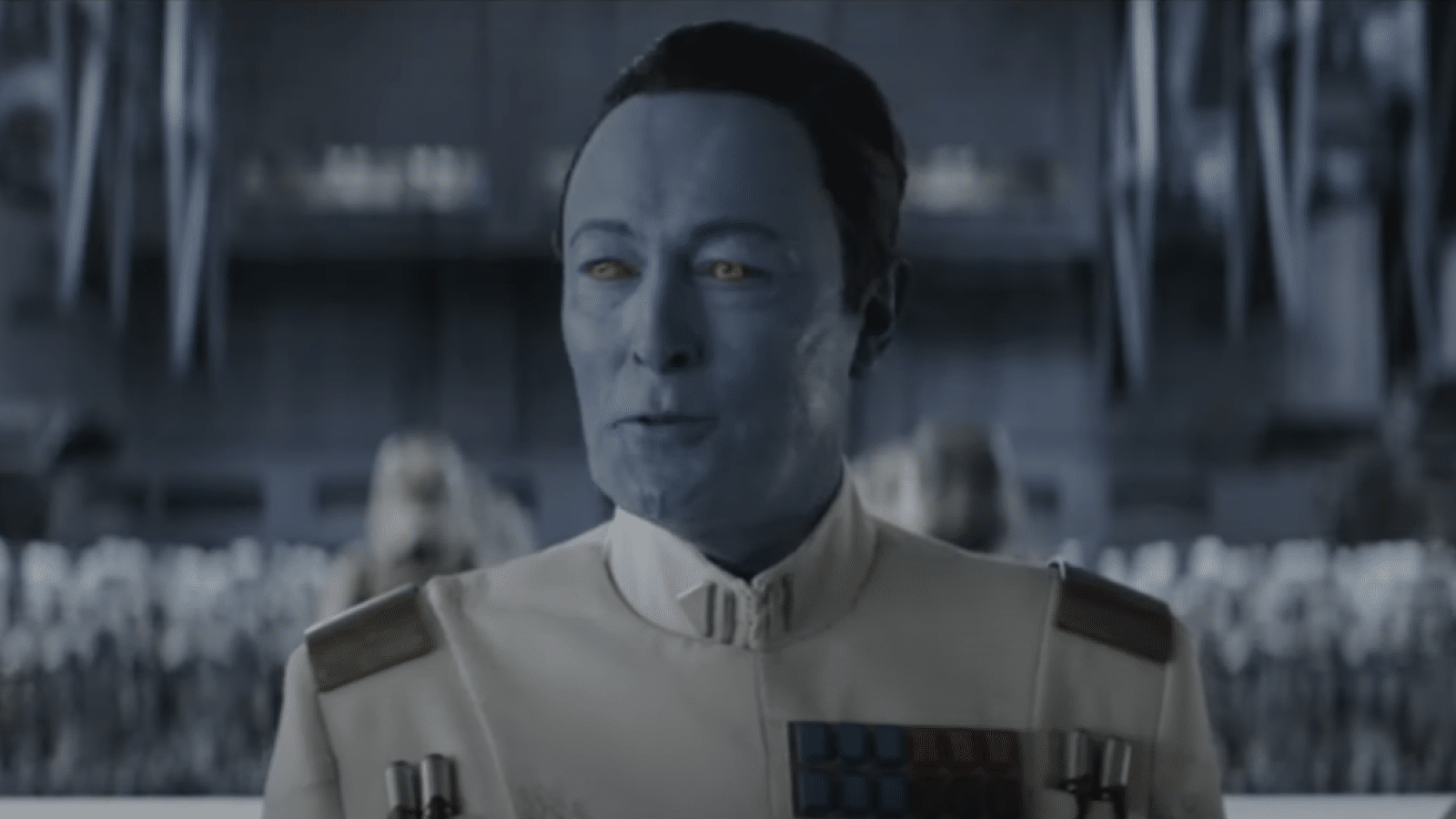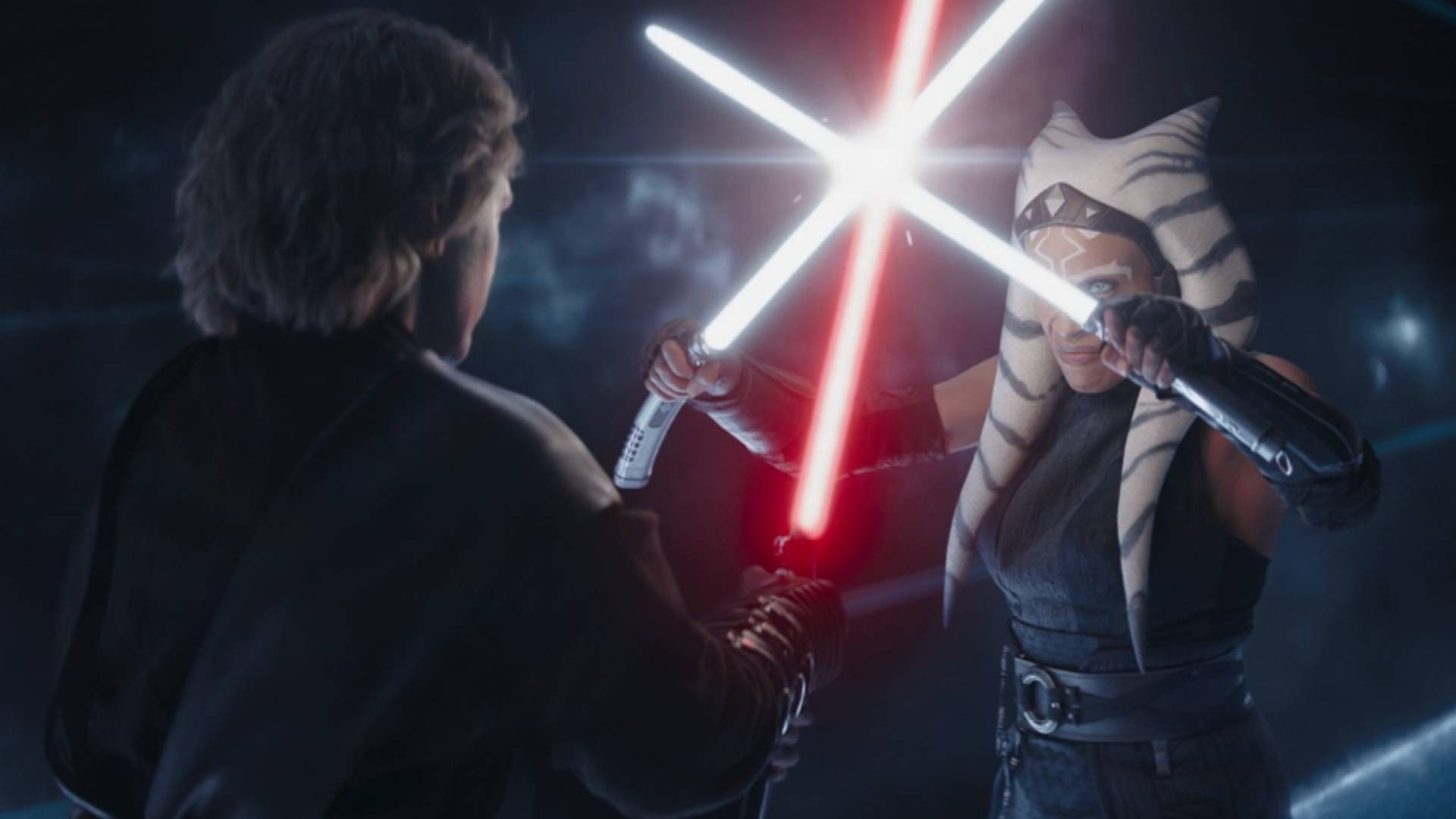In a tale set before the downfall of the Jedi and the rise of the Empire, Jedi Mace Windu plunges into the criminal underworld to safely retrieve a secret formula that risks upending the galactic status quo in Mace Windu #1 written by Marc Bernadin, pencils by Georges Jeanty, inks by Dexter Vines, colors by Andrew Dalhouse and letters by Joe Caramanga!
Austin Gorton: Scott! Welcome to War Reports, and the kickoff to a new miniseries starring everyone’s favorite purple-lightsaber-wielding Jedi.
Scott Redmond: Thanks for having me! Star Wars giving one of its few prominent Black characters a series launching in Black History Month; I was going to have thoughts.
Austin: It also features a nearly all Black creative team which, sadly, is something of a rarity not just for Star Wars comics, or Marvel Comics, but comics period. Before we get into the nitty gritty of the issue, any general thoughts on Mace Windu as a character?
Scott: Mace is one of those characters that is well known (the actor behind the character probably helping a ton), yet I feel like is vastly underutilized for that level of fame. Even some of the Jedi who were more background or supporting here or there feel like they get a bit more expanded media attention. Honestly, Mace feels like a character that is cool yet vastly underexplored. Maybe I’ve just missed some things along the way.
Austin: If you have, I’ve missed them too. I agree that there seems to be a disconnect between Mace’s real-world level of fame (thanks to Samuel L. Jackson) and how he’s been utilized in stories in-universe. Marvel did a prior miniseries starring him a few years ago. I’d say Shatterpoint, the novel by Matthew Stover, stands as the definitive Mace Windu story, but that’s become a de-canonized Legend. Beyond that, he seems mostly to get slotted into Jedi Council stories or hanging out over Yoda’s shoulder while the story’s protagonist gets their mission. [Editor Matt’s Note: It’s gonna be a good year for Mace, as there will be a new Mace novel, The Glass Abyss, coming in August].
Will this miniseries right this wrong and give us a new definitive Mace Windu tale? Let’s get into it!
Windu. Mace Windu.
Austin: One of the things that struck me about Mace Windu #1 is the way it’s structured like a James Bond or Mission: Impossible film, with the issue opening in media res with an action sequence featuring the protagonist that is seemingly disconnected from the main plot, before the protagonist heads back to HQ for confab with their seasoned boss at which point they’re assigned the mission that forms the actual plot of the story, after which they set about integrating themselves into an exotic locale.
It’s a relatively common setup, but one unique to Star Wars, especially Star Wars stories set in this era. While writer Marc Bernandin is careful to establish the stakes as a threat to the well-being of the people of the Republic, the structure of the story lends it a mercenary atmosphere that feels a little out of place in the context of the pre-Clone Wars Jedi.
Scott: Before diving into this issue, I was not sure what I was expecting. As we noted, there hasn’t been a ton done with Mace so there wasn’t really a baseline to lean expectations against. That being said, very standard seems to be a good way to describe it. Which, related to the comparisons already made above, is not necessarily a bad thing. It wasn’t revolutionary in any big fashion but it provided a good space to show off some different facets of the character that put him more in line with other Jedi rather than the aforementioned council guy.
I do appreciate the fact that it’s already helping break the “there are like five Black people in the whole galaxy” issue of Star Wars with the introduction of Azita Cruuz. Also, while badass in a way, I did also groan a bit that the first bit of the story is the lone Black Jedi having broken out of a prison (off panel).
Austin: I groaned a bit as well, before it became clear that was the “cold open” action sequence and not going to be the main thrust of the plot, but it was still an oddly specific detail.
The other interesting thing about this setup is how relatively young Mace is. This seems like a pre-council, pre-master Mace Windu, just based on the dialogue and context clues. That’s something we haven’t really seen before, and that plus the circumstances of the plot seems to suggest Mace is operating as a kind of “weapon of the Jedi” here.
Scott: It’s a very nice avenue to take, since it stands opposite of what we already established is the norm for the character. While my views on the Jedi as a concept go back and forth through the various eras, I would not be opposed to spending more time with Mace or others in such a light. Council related stuff honestly kind of bores me, because generally the eras we spend with them are around the time they are lost in their own dogma.
Give me more stories of Mace running around doing cool Jedi stuff, and I might be down to check out more stuff. While this didn’t extremely wow me as a first issue, it did pique my interest in a way I wasn’t expecting when first opening the issue.
Make Ship Go Now
Austin: The MacGuffin of this story (for the moment, at least) is a new kind of hyperspace fuel, a specially-supercharged form of coaxium that would enable ships using it to outpace all existing vehicles. After mostly ignoring it, fuel has become a recurring plot point in the Star Wars universe over the past ten years, factoring into the plots of both The Last Jedi and Solo. A geopolitically-destabilizing fuel helps justify the Jedi involvement, and also ties into the whole “Jedi James Bond” vibe (this could easily be some kind of nuclear material everyone is trying to keep out of the hands of the Soviets). How does this work for you as a plot device? Do you think there’s anything more to it than a plot device?
Scott: That is a very interesting point, how much fuel and its presence has become more of a sticking point with Star Wars as of late. While the other star named cultural landmark franchise was always hyper focused on fueling issues, this one stood apart. After threats generally being tied to some super-weapon or droid force or other realms, gas issues do give them another avenue in which to explore an already heavily explored universe.
So I guess it works for me as a plot device, even if it feels a bit odd. Partially I think the oddness of it ties to your second question. If the Star Wars comics were not so heavily tied to Lucasfilm when it comes to what is approved and how they slide through canon, my answer might be different. Since they do, my assumption is very much it’s just a plot device. One that will be conveniently destroyed and forgotten by the story’s end, since no such faster system has come up in anything set after this. Which puts it very much again in that Bond or Impossible Mission mold you mentioned.
Austin: Indeed. It – this renewed use of fuel as a plot device here and elsewhere — is, in its own way, not unlike what George Lucas did with midichlorians: it’s taking something that just happened in the Star Wars galaxy, and trying to dig into the nitty gritty of how, exactly that works. Luke just “felt” the Force, and Han Solo never had to stop for gas; the Falcon just got where it needed to go. Now, we know about midichlorians and coaxium, and while both threaten the sense of mythic mystique that is very much a signature part of Star Wars, the fuel piece in particular opens up avenues for different kinds of stories, more (relatively) grounded ones involving struggles for resources, the kind of thing more traditional spy stories often grapple with.
How well it works, of course, comes down to execution. Mace Windu #1 kicks off this particular story well enough, setting up the plot and, more importantly, setting the tone. How well it works from here on out remains to be seen.
Elsewhere in a Galaxy Far, Far Away
Darth Vader #43 by Greg Pak and Adam Gorham

After their introduction and inducement of Vader in the previous issues, Darth Vader #43 is chiefly concerned with providing some more background and context on the Schism Imperial. We are shown the moments where the core group of characters were first approached by Administrator Moore, and her methods for identifying and weeding out Palpatine loyalists among the fallen Imperials. This is narrative work that probably needs to happen to make the Schism Imperial succeed as a concept, but it does have the unfortunate side-effect of making Vader a supporting character in his own book, more or less relegated to being the group’s heavy, for this issue, at least.
Also, lest you’re worried they wouldn’t appear and Vader would have to go an arc without an increasingly random “team” of supporting players surrounding him, the co-opted Rebel cyborgs from the previous issue are still on hand, still fighting Vader’s control but ultimately failing to break free (for now).
Star Wars #43 by Charles Soule, Steven Cummings & Jethro Morales

When the previous issue kicked off a new story involving Luke going inside a red Kyber crystal to try and heal it, only to encounter an emo Space Dracula lording over his little slice creation, I rolled my eyes at the prospect of yet another multi-part story that takes the protagonist out of familiar confines and drops them into a narrative cul-de-sac, and with a bland antagonist at the center of it to boot.
Thankfully, as of Star Wars #43, it’s clear this was just a brief two part palate cleanser before the actual next big story arc begins. Even better, the story ends stronger than it begins, with writer Charles Soule making the conflict less about the emo Space Dracula and more about Luke’s unresolved feelings about Darth Vader’s familial revelation. In doing so, it makes the story another (relatively minor but not superfluous) step in Luke’s character arc towards the more calmly cool Jedi confident in his father’s innate goodness that we see in Return of the Jedi. It also does a bit of narrative building, turning out to be the tale of how Luke got the green crystal for his second lightsaber.
Today in Star Wars History

The video game Star Wars: X-wing Alliance was released on February 28th, 1999. The third game in a series of space simulators for the PC, it was the first to allow players to fly multi-crewed craft like the Millennium Falcon.







